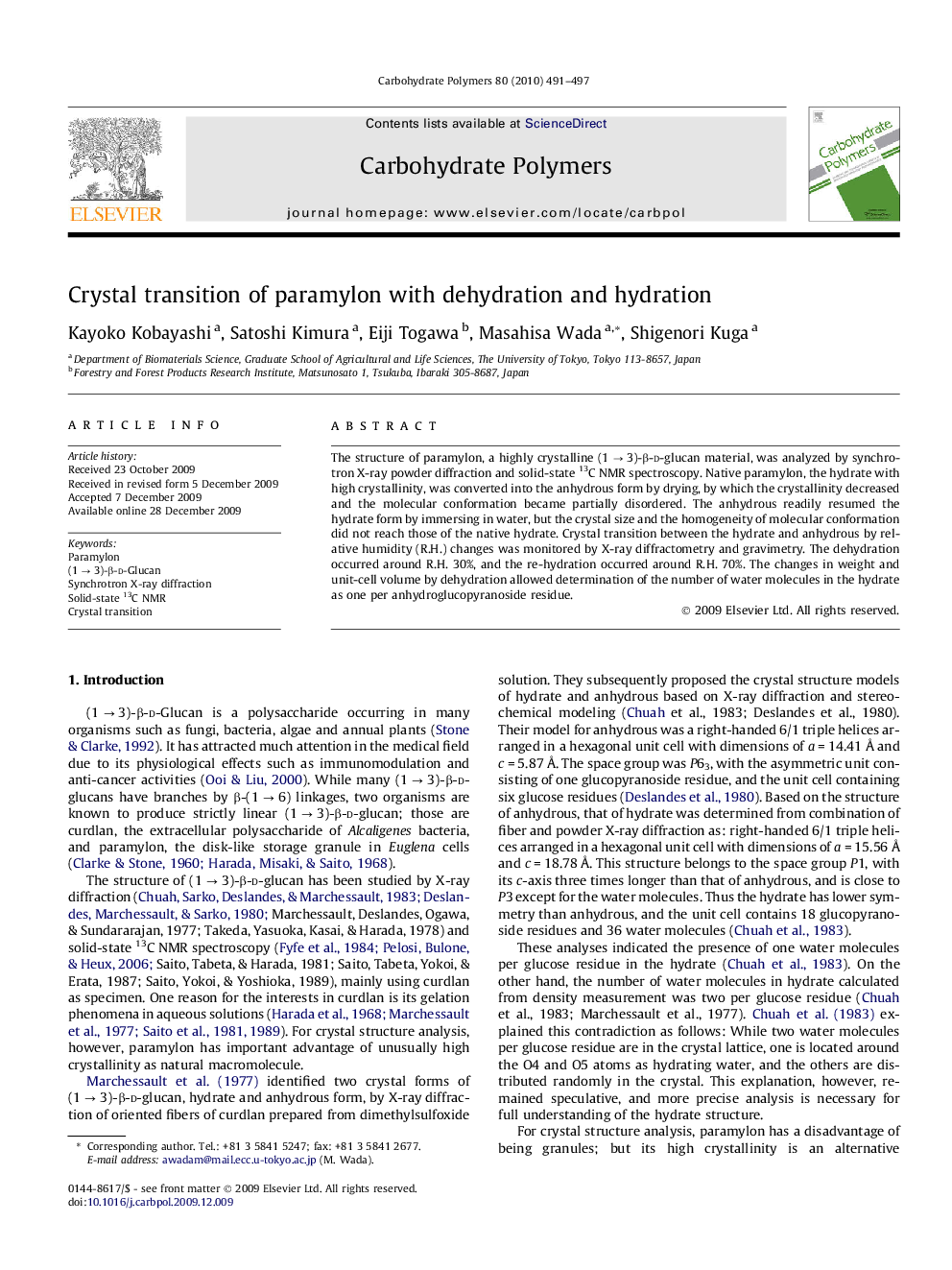| Article ID | Journal | Published Year | Pages | File Type |
|---|---|---|---|---|
| 1377894 | Carbohydrate Polymers | 2010 | 7 Pages |
The structure of paramylon, a highly crystalline (1 → 3)-β-d-glucan material, was analyzed by synchrotron X-ray powder diffraction and solid-state 13C NMR spectroscopy. Native paramylon, the hydrate with high crystallinity, was converted into the anhydrous form by drying, by which the crystallinity decreased and the molecular conformation became partially disordered. The anhydrous readily resumed the hydrate form by immersing in water, but the crystal size and the homogeneity of molecular conformation did not reach those of the native hydrate. Crystal transition between the hydrate and anhydrous by relative humidity (R.H.) changes was monitored by X-ray diffractometry and gravimetry. The dehydration occurred around R.H. 30%, and the re-hydration occurred around R.H. 70%. The changes in weight and unit-cell volume by dehydration allowed determination of the number of water molecules in the hydrate as one per anhydroglucopyranoside residue.
